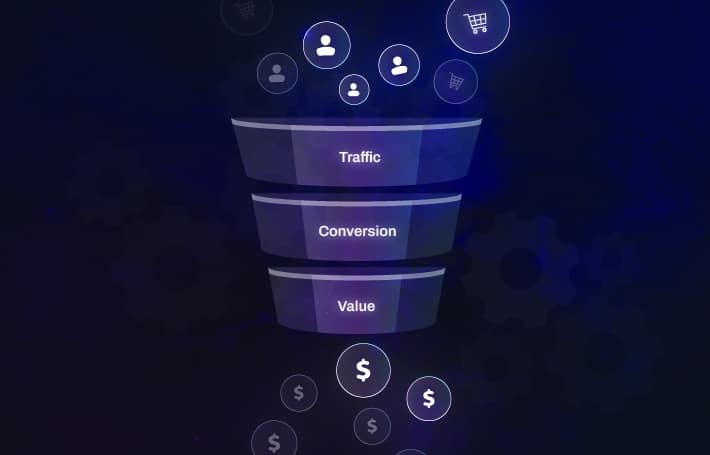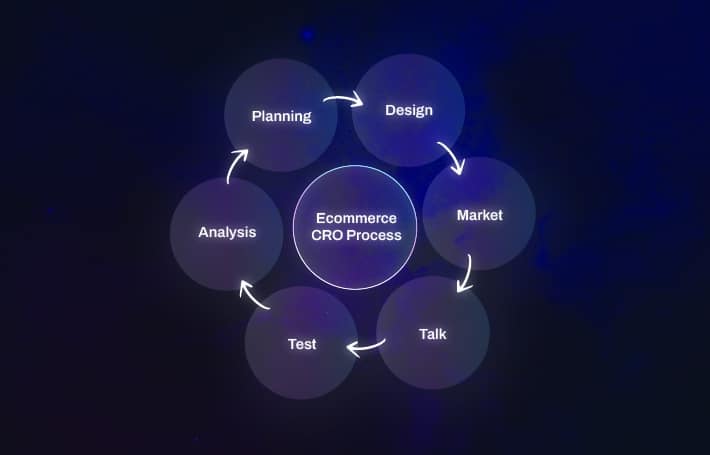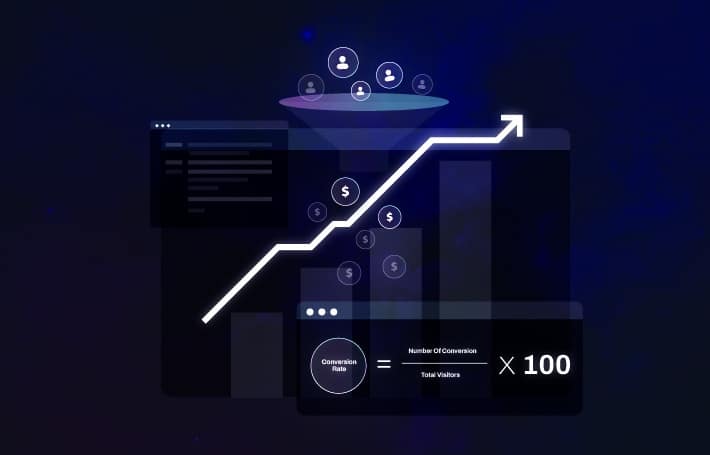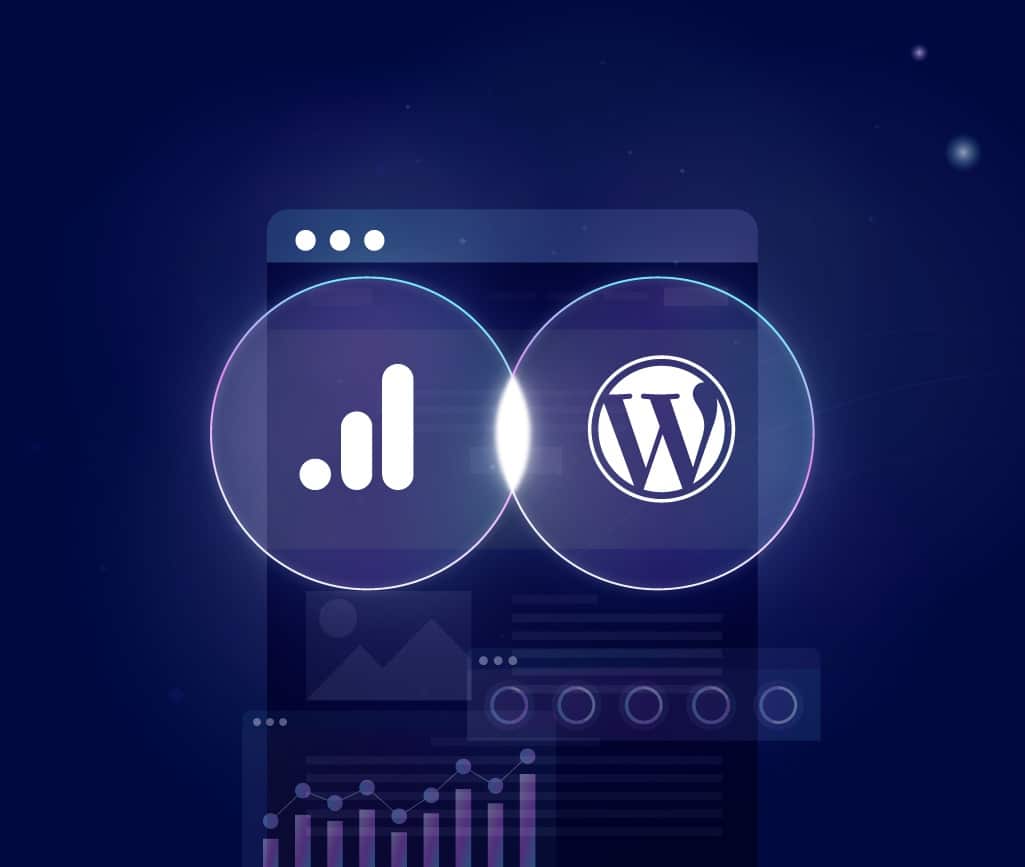Conversion Optimization
14 minute read
Ecommerce CRO: Sell More With These Top Conversion Rate Optimization Tactics.
LAST UPDATED:
November 30, 2023


In the fast-paced world of ecommerce, where competition is fierce and consumer attention spans are short, driving conversions is essential for success. Enter Conversion Rate Optimization (CRO) from Huemor. Our strategic approach focuses on improving ecommerce conversion rates to maximize sales and return on investment (ROI).
Here we explore the fundamentals of ecommerce conversion rate optimization and provide you top tactics to boost conversions, sell more, and achieve your business goals.
Understanding Ecommerce CRO

In this ecommerce CRO guide, we will explain the conversion rate optimization process in detail and talk through the best ways to increase site visitors and improve ecommerce conversion rates.
What is Ecommerce Conversion Rate Optimization?
Ecommerce Conversion Rate Optimization (CRO), is a strategic approach that focuses on improving the conversion rates of an ecommerce website. Conversion rate refers to the percentage of online shoppers who complete a desired action, such as making a purchase, signing up for a newsletter, or filling out a form.
Ecommerce conversion rate optimization aims to enhance the website’s performance, user experience, and design elements to increase the number of visitors who take these desired actions, ultimately driving more sales and boosting return on investment (ROI).
In the competitive world of ecommerce, where online businesses are constantly vying for customer attention and engagement, optimizing average conversion rates is essential for success. It involves analyzing user behavior, testing different design elements and user experiences, and making data-driven improvements to the website to encourage visitors to take the desired actions.
How does CRO work?

Ecommerce CRO works by employing a systematic approach to analyze, test, and optimize various elements of a website or landing page to increase the overall site’s conversion rate on ecommerce sites. The process typically involves the following steps:
- Analyzing data: Understanding user behavior, identifying pain points, and studying website analytics to gain insights into conversion bottlenecks and areas for improvement.
- Setting goals: Defining clear objectives and key performance indicators (KPIs) to measure success and determine the desired actions visitors should take.
- Testing: Conducting A/B testing or multivariate testing to compare different design elements, messaging, or user experiences to determine which variations lead to a higher conversion rate.
- Implementing changes: Based on the test results, implementing the successful variations and making data-driven improvements to the ecommerce websites or landing pages.
- Monitoring and iteration: Continuously monitoring the impact of the implemented changes, analyzing data, and iterating on the optimization process to improve conversion rate over time.
By following this iterative and data-driven approach, CRO helps businesses increase overall conversion rate, drive more sales from site visitors, and achieve their desired marketing objectives.
Ecommerce CRO Process Overview

The process of CRO begins with understanding the customers and their needs. By conducting user research and analyzing website analytics, businesses can gain insights into user behavior, pain points, and areas for improvement.
This helps in identifying bottlenecks that may hinder your conversion rate and informs the optimization efforts.
Identify pain points and opportunities
Once they are identified, businesses can implement various tactics and strategies to improve average ecommerce conversion rates. This can include optimizing the checkout process to reduce friction and make it as smooth as possible for customers to complete their purchases.
It may also involve implementing responsive design to provide a seamless user experience across different devices. As mobile devices are increasingly important in the ecommerce landscape, mobile UI continues to have a big impact on average conversion rates.
A/B testing adds value
By creating variations of design elements, calls-to-action (CTAs), or messaging and comparing their performance against each other, businesses can determine which variations lead to a higher conversion rate. This data-driven approach allows them to make informed decisions about the most effective design and messaging elements for their key audience.
Personalization is key
By leveraging customer data, businesses can provide personalized recommendations, targeted offers, and tailored content to individual visitors. This helps in creating a more engaging and customized shopping experience, leading to higher conversion rates.
Optimizing product pages
High-quality product images, compelling and informative product descriptions, customer reviews and ratings, and prominent CTAs all play a significant role in driving product page conversions. By creating visually appealing and persuasive product pages, businesses can enhance the user experience and build trust and credibility with potential customers.
Monitoring and analyzing data
By continuously tracking website and marketing performance metrics, businesses can identify trends, measure the impact of optimization efforts, and make data-driven decisions for further improvements. They can iterate, test new ideas, and refine their strategies based on the insights gained from the data.
Increasing the average conversion rate
Overall, CRO in ecommerce is a comprehensive and continuous process of improving conversion rates in order to drive more sales and increase ROI. By implementing best practices, leveraging customer insights, testing different variations, and analyzing data, businesses can optimize their ecommerce websites to enhance user experience, increase engagement, and ultimately achieve their business goals.
CRO importance for sales and ROI
In the fiercely competitive ecommerce landscape, even small improvements in a conversion rate can have a significant impact on sales and ROI.
By optimizing your website and marketing efforts, you can increase the number of visitors who take the desired action, whether it’s making a purchase, signing up for a newsletter, or filling out a form. Improved conversion rates not only boost sales but also result in higher customer lifetime value and increased customer loyalty.
Conversion Rate Optimization Tactics

To achieve higher conversion rates and drive more sales, it’s essential to employ the best ecommerce conversion rate optimization strategies. Let’s see how you can improve your conversion rate and dive into the best techniques for increasing sales.
Best practices for improving your desired conversion rate
- Streamline the checkout process: Reduce friction and make it as easy as possible for customers to complete their purchases.
- Optimize website speed: Ensure your website loads quickly to make things easier for existing customers and prevent potential customers from bouncing.
- Implement responsive design: Make your website mobile-friendly to provide a seamless user experience on all devices.
- A/B testing: Experiment with different design elements, calls-to-action (CTAs), and messaging to identify what resonates best with your audience.
- Implement social proof: Display customer reviews, ratings, and testimonials (social proof) to build trust and credibility.
Techniques for increasing sales
Take a look at these helpful tips for increasing sales on your ecommerce website.
Personalize the shopping experience
Personalization is a powerful tactic for CRO in ecommerce. By leveraging customer data to provide targeted offers based on individual preferences, businesses can tailor the shopping experience to unique visitors, increasing the likelihood of conversions. This can be achieved by analyzing data such as purchase history, browsing behavior, and demographic information to understand customer preferences and interests.
By showcasing relevant products that match their interests, businesses can capture their attention and increase the chances of a purchase. This not only improves the user experience but also helps to build a stronger connection with customers, leading to increased customer loyalty and repeat purchases.
Implement scarcity and urgency
Creating a sense of urgency is an effective tactic to encourage immediate action and drive conversions. By implementing scarcity and urgency techniques, businesses can create a fear of missing out (FOMO) that motivates customers to make a purchase.
One way to create urgency is by highlighting limited-time offers or promotions. By setting a specific timeframe for a discount or promotion, businesses can create a sense of urgency, prompting customers to take advantage of the offer before it expires.
Upselling and cross-selling
Upselling and cross-selling techniques are valuable strategies in CRO for ecommerce to increase the average order value and maximize sales. Upselling involves recommending a higher-priced product or an upgrade that offers additional features or benefits compared to the customer’s initial selection.
Cross-selling, on the other hand, involves suggesting complementary products or accessories that go well with the customer’s current selection. These recommendations can be displayed on product pages, during the checkout process, or even through targeted email marketing.
Simplify product search and navigation
A user-friendly and intuitive product search and navigation system is crucial for CRO in ecommerce. Customers should be able to easily find the products they are looking for and navigate through the website without any confusion or frustration.
By simplifying product search and navigation, businesses can enhance the user experience, reduce bounce rates, and increase the chances of conversions. Making it easy for customers to find what they are looking for improves engagement and satisfaction, leading to higher conversion rates.
How to Optimize Your Product Pages

Product pages play a crucial role in driving up the conversion rate on ecommerce websites— implement these strategies and tips to boost clicks and conversions.
Strategies for boosting clicks and conversions
- Use compelling product images: High-quality images from different angles, zoom functionality, and lifestyle shots can increase user engagement and confidence in the product.
- Clear and concise product descriptions: Write persuasive and informative product descriptions that highlight the key features and benefits.
- Include customer reviews and ratings: Showcase real-life experiences of previous customers to alleviate any doubts potential buyers may have.
- Display prominent and enticing CTAs: Make it easy for visitors to add products to their carts or complete the purchase with well-placed and visually appealing CTAs.
Tips for improving product descriptions and images
- Incorporate SEO keywords: Optimize your product descriptions with relevant keywords to improve organic visibility and attract targeted traffic.
- Use bullet points and headings: Break down product information into easily scannable sections to help users quickly find the information they need.
Experiment with video content: Consider creating informative product videos that demonstrate the features and benefits, enhancing the customer’s understanding and connection with the product.
Proven Ecommerce CRO Formula

To maximize your ecommerce conversions and ROI, follow these key steps in your ecommerce website’s CRO strategy.
Key steps for maximizing sales and ROI
- Set clear goals and define key performance indicators (KPIs) to measure your success.
- Analyze website and marketing performance data to identify areas for improvement.
- Conduct user research and understand your target audience’s needs, preferences, and pain points.
- Create a hypothesis and test different strategies to increase your conversion rate using A/B testing or multivariate testing.
- Implement successful strategies and continuously optimize based on the results obtained.
- Monitor and analyze the impact of your ecommerce optimization efforts to ensure ongoing success.
Embracing ecommerce CRO and implementing top tactics as discussed in this blog post, you can significantly improve your website’s conversion rate and drive more sales on computers and mobile devices.Huemor integrates this strategy in every ecommerce site we build or support, consistently monitor and analyze performance to ensure ongoing success. Let’s start optimizing your website today so we can watch your sales soar while maximizing your ROI.
For those extra-curious about conversion rates
What does CRO mean in ecommerce?
CRO stands for Conversion Rate Optimization in the context of ecommerce. It refers to the strategic process of improving the conversion rate on an ecommerce website. Conversion rate is the percentage of visitors who take a desired action, such as making a purchase, signing up for a newsletter, or filling out a form.
CRO aims to enhance the website’s performance, user experience, and design elements in order to increase the number of visitors who complete these desired actions, ultimately driving more sales and boosting ROI.
How can I improve my CRO in ecommerce?
Improving your CRO in ecommerce involves implementing various strategies and techniques to increase your conversion rate. Here are a few tips to help you get started:
- Streamline the checkout process: Simplify and optimize the steps required for customers to complete their purchases, reducing friction and increasing the likelihood of conversion.
- Conduct A/B testing: Experiment with different design elements, calls-to-action, and messaging to identify what resonates best with your audience and leads to a higher conversion rate.
- Personalize the shopping experience: Leverage customer data to provide personalized recommendations, targeted offers, and tailored content to increase engagement and drive more conversions.
- Optimize your product pages: Use compelling product images, informative descriptions, customer reviews, and prominent CTAs to enhance the user experience and encourage conversions.
- Monitor and analyze data: Continually track and analyze your website and marketing performance data to identify areas for improvement and make data-driven decisions to optimize your conversion rate.
What is CRO in online marketing?
In online marketing, CRO refers to Conversion Rate Optimization. It is the process of improving the conversion rates of a website or landing page to maximize the desired actions taken by visitors.
By optimizing various elements of an online marketing campaign, such as landing page design, messaging, and user experience, marketers aim to increase the percentage of visitors who convert into customers or engage in other valuable actions, ultimately improving the campaign’s effectiveness and return on investment.
What is CRO in Shopify?
Ecommerce conversion rate optimization on Shopify refers to the practice of improving the ecommerce conversion rates of an online store built on the Shopify platform.
The primary objective of CRO on Shopify is to maximize the conversion rate, which is the percentage of website visitors who take the desired action. By increasing the conversion rate, businesses can generate more sales, enhance customer engagement, and ultimately improve their return on investment (ROI).
To implement CRO on Shopify effectively, businesses can follow several key steps:
1. Set clear goals and define key performance indicators (KPIs)
Clearly establish the objectives you want to achieve through CRO on Shopify. By defining specific KPIs that align with your objectives, you can accurately calculate conversion rate data and measure the success of your CRO efforts.
2. Analyze website and marketing performance data
Utilize the analytics capabilities in Shopify or integrate third-party analytics tools to gain insights into user behavior, traffic sources, sales funnel, conversion funnels, and other relevant data points.
By analyzing this data, you can identify areas for improvement, spot drop-off points, and understand user preferences and pain points.
3. Conduct user research
Gain a deep understanding of your target audience’s needs, preferences, motivations, and pain points. Identify their shopping habits, preferences, and common challenges they may face while interacting with your Shopify store. Conduct surveys, interviews, and usability tests to gather qualitative insights. This user research helps you tailor your CRO strategies to better meet their expectations.
4. Optimize the website design and user experience
Enhancing the design and user experience of your Shopify store is crucial for improving conversions. Optimize the layout, navigation, and overall visual appeal of your ecommerce store. Ensure that your website is mobile responsive, as an increasing number of customers shop from mobile devices. Simplify the checkout process and minimize friction points to provide a smooth and seamless experience for customers.
5. Improve product pages
Optimize your product pages to showcase your products effectively and encourage customers to make a purchase. Use high-quality images, compelling product descriptions, customer reviews, and ratings to build trust and credibility. Implement clear and prominent call-to-action buttons to encourage visitors to add items to their cart or make a purchase.
6. Implement personalized recommendations and targeted offers
Leverage customer data to provide personalized product recommendations and targeted offers. Analyze customer behavior, purchase history, and demographic information to understand individual preferences and interests.
Use this data to offer personalized recommendations that align with each customer’s interests, increasing the likelihood of conversion. Implement targeted offers, discounts, or promotions based on customer segments to drive engagement and sales.
7. Implement scarcity and urgency tactics
Create a sense of urgency and scarcity by highlighting limited-time offers, showcasing low stock levels, or displaying countdown timers for sales or promotions. These tactics create a fear of missing out and motivate customers to take immediate action, resulting in increased conversions.
8. Optimize the checkout process
Streamline the checkout process to reduce cart abandonment rates. Simplify the steps required to complete a purchase, minimize form fields, and offer multiple payment options to accommodate customer preferences. Provide clear and transparent shipping and return policies to build trust and mitigate any concerns customers may have.
9. Implement A/B testing and data-driven decision-making
Use A/B testing to compare different variations of your website, product pages, or marketing campaigns. Test different design elements, messaging, and user experiences to determine the most effective variations that drive conversions. Collect and analyze data to make informed decisions based on the results obtained from these tests.
10. Continuously monitor and analyze the impact
Regularly monitor the impact of your CRO efforts on Shopify by tracking key metrics and analyzing the data. Review conversion rates, average order value, bounce rates, and other relevant KPIs to assess the effectiveness of your conversion optimization strategies. Make data-driven decisions, iterate on successful strategies, and refine your approaches to ensure ongoing success.
By implementing CRO on Shopify, businesses can enhance their online stores, improve customer experience, and ultimately increase ecommerce conversions and sales. It is an iterative and data-driven process that requires continuous monitoring, analysis, and optimization to maximize results and achieve long-term success
What are the key steps to take to improve ecommerce conversion rates?
Set clear goals and define key performance indicators (KPIs) to measure your success.
Setting clear goals is essential for maximizing ecommerce sales and ROI through CRO. Clearly define what you aim to achieve, whether it’s increasing your conversion rate, improving average order value, or enhancing customer retention. By establishing specific and measurable goals, you can track your progress and evaluate the success of your CRO efforts.
To measure your success, identify key performance indicators (KPIs) that align with your goals. KPIs can include metrics such as conversion rate, revenue per visitor, average order value, bounce rate, or customer lifetime value.
Analyze website and marketing performance data to identify areas for improvement.
Regularly analyzing website and marketing performance data is crucial for identifying areas that require improvement. Utilize tools like Google Analytics or other analytics platforms to gather insights about user behavior, traffic sources, conversion funnel performance, and other relevant data points.
By examining this data, you can identify trends, spot bottlenecks, and pinpoint areas where visitors are dropping off or encountering difficulties. Pay attention to metrics like exit rates, page load times, click-through rates, and conversion funnel drop-offs.
Conduct user research and understand your target audience’s needs, preferences, and pain points.
User research is a valuable step in maximizing sales and ROI through ecommerce conversion rate optimizing. Seek to understand your target audience’s needs, preferences, motivations, and pain points. Conduct surveys, interviews, and usability tests to gather qualitative insights.
By empathizing with your target audience, you can better align your CRO strategies with their expectations. This helps you create a more tailored and personalized shopping experience, leading to higher conversion rates and customer satisfaction.
Create a hypothesis and test different CRO strategies using A/B testing or multivariate testing.
Once you have identified areas for improvement and gained insights about your target audience, create a hypothesis for your CRO efforts. Formulate a clear statement about the change you intend to make and the expected impact on your overall conversion rates.
To validate your hypothesis, conduct experiments using A/B testing or multivariate testing. By showing different variations of your website or landing page to different segments of your audience, you can evaluate which changes have the desired impact on your conversion rate.
Implement successful strategies and continuously optimize based on the results obtained.
Once you have tested different CRO strategies and identified successful variations, implement these changes on your website or landing page. This can involve updating design elements, optimizing user flows, refining messaging, or adding new features based on the insights gained from testing.
Gather feedback from customers, track the performance of different variations, and iterate your strategies based on the results obtained. By continually optimizing and refining your website or marketing campaigns, you can sustain and improve your sales and ROI over time.
Monitor and analyze the impact of your optimization efforts to ensure ongoing success.
Monitoring and analyzing the impact of your optimization efforts is crucial for ongoing success in maximizing sales and ROI. Regularly review your KPIs, track conversions, and analyze the results to gain insights into the effectiveness of your CRO strategies and average conversion rates.
Get Memorable Insights.
Sign up to receive actionable web design advice directly in your inbox monthly.
Get Memorable Insights.
Sign up to receive actionable web design advice directly in your inbox monthly.
Author
Jeff Gapinski is the President of Huemor where he helps plan the long-term strategic growth of the agency. Jeff is passionate about UI/UX, demand generation, and digital strategy.
What Do You Think?
Have feedback? Maybe some questions? Whatever it is, we'd love to hear from you.







No comments found